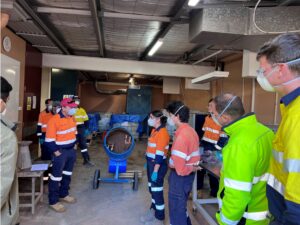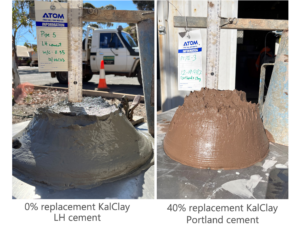Low-Cost, Sustainable Cement Alternatives for the Mining Industry
The development of a new, environmentally friendly material product is being sponsored by Mining 3 and other Industry leaders, utilising resources from Western Australia at the WA School of Mines. The application aims to replace a significant proportion of cement usage and reduce CO2 emissions in the mining industry.

Cement-based products are used extensively in the mining industry. Future enhancements to underground mining safety could see more sprayed concrete, additional cablebolt reinforcement and increased cemented fill masses will be required, thereby increasing the use of cement. Due to the energy requirements of cement manufacturing, this would increase the carbon footprint of mining companies.
Pilot research at the WA School of Mines has shown that suitable calcinated clays can be used as supplementary cementitious material within an ordinary Portland cement (OPC) mix. The calcination process for clays can reduce the CO2 emissions in the order of 30-40% while replacing 40 to 60% of the cement. It also has the potential to reduce cost by 25%. It is noted that acceptance by the Mining Industry will increase the likelihood that the Civil Engineering applications be implemented at an earlier stage.
The project is studying mining applications such as:
Cablebolt Grout:
- Improved mechanical properties in high stressed environments
- Compatible with mechanised installations

Shortcrete:
- Increase the early strength
- Decrease the re-entry time
- Decrease the risk of violent shortcrete ejection through the mesh
Cement Aggregate/ paste fill:
- Match the required strength of the backfill at lower cost
The initial meeting for the project was held last July in Kalgoorlie and the initial results were well received by the sponsors, authorities and academics attending the meeting. Other Industry sponsoring this 2-year research include: IGO Limited, Goldfields, Evolution, Geobrugg AG, Barminco and Ambrose Mining.










